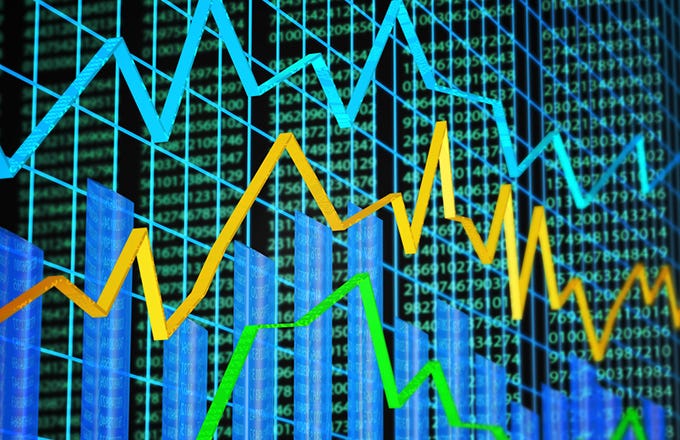
|
Take a look at the mutual fund table below:
 |
Columns 1 & 2: 52-Week High and Low. These are the mutual fund's highest and lowest over the previous 52 weeks (1 year). This typically does not include the previous day's price.
Column 3: Fund Name. This column lists the name of the mutual fund. The company that manages the fund is written above the column in bold type.
Column 4: Fund Specifics. Different letters and symbols have various meanings. For example, a "*" means the fund is retirement account eligible, "N" means no load, "F" is front-end load, and "B" means the fund has both front and back-end fees. For other symbols, see the legend that accompanies the financial tables in your newspaper.
Column 5: Dollar Change. The dollar change in the price of the mutual fund from the previous day's trading.
Column 6: % Change. The percentage change in the price of the mutual fund from the previous day's trading.
Column 7: Week High. The highest price at which the fund traded during the past week.
Column 8: Week Low. The lowest price at which the fund traded during the past week.
Column 9: Close. The last price at which the fund traded.
Column 10: Week's Dollar Change. The dollar change in the price of the mutual fund from the previous week.
Column 11: Week's % Change. The percentage change in the price of the mutual fund from the previous week.
Financial Tables: Currency Table
Related Articles
-
 Financial Advisor
Financial AdvisorHow to Rate Your Mutual Fund Manager
Here is what you really need to look for when you're deciding on a mutual fund. A solid choice is key. -
 Investing
InvestingMutual Fund Trading Rules
Make sure to review this guide on the dos and don'ts of mutual fund trading before you invest, including how trades are executed and which fees to look out for. -
 Investing
InvestingConsider These Fees When Evaluating Mutual Funds
The best way to evaluate a mutual fund is by digging a bit deeper into the fees charged. -
 Investing
InvestingHow to Buy Mutual Funds Online
Learn how to buy mutual funds online. Discover which websites offer mutual fund trading services, how to choose a fund and typical fees. -
 Investing
InvestingTrading Mutual Funds for a Living: Is It Possible?
Find out why trading mutual funds for a living isn't your best bet, including how funds discourage short-term trading and which options may better serve you. -
 Investing
InvestingETFs vs. Mutual Funds: How They Compare
ETFs and mutual funds have distinct differences that investors need to understand. -
 Financial Advisor
Financial AdvisorThe Best Free Mutual Fund Research Providers
There is no lack of information for advisors on mutual funds. Getting the right sources (at the right price) can be as easy as a few clicks away.


